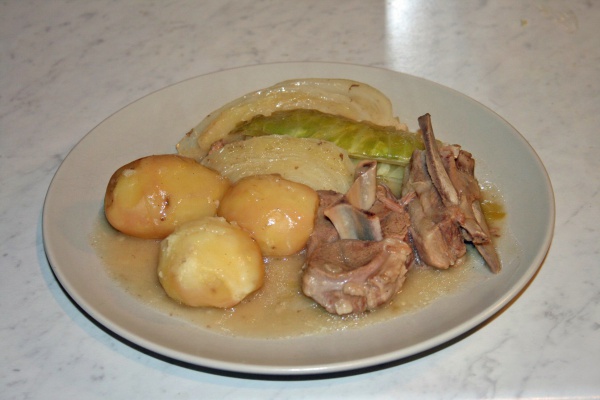Facts About Fårikål
Fårikål: Norway's Comforting National Dish
Picture a chilly autumn evening in Norway, with the inviting aroma of a hearty stew filling the air. That's Fårikål for you—a beloved Norwegian dish that has rightly earned its place as the national dish of Norway.
But what exactly is Fårikål? It’s a simple yet delectable stew made with pieces of mutton (bone-in for added richness), cabbage, whole black peppercorns, and sometimes a touch of wheat flour. These ingredients are slow-cooked in a casserole for several hours until they meld into a delicious, robust meal. Traditionally, it’s served with boiled potatoes in their skins, rounding out this wholesome and satisfying dish.
Fårikål is typically prepared in early autumn, and its significance is celebrated on Fårikål Feast Day, held on the last Thursday of September each year. The name "Fårikål" translates to "mutton in cabbage" a straightforward nod to its main ingredients. Intriguingly, the name stems from the Danish term "gaas i hvidkaal" which means "goose in white cabbage."
This dish isn't merely a staple in Norwegian households; it holds a cherished place in the country's popular culture. On September 29, 2012, a world record was set in Oslo for the largest portion of Fårikål ever made. This enormous stew weighed a staggering 594.2 kg and comprised a mix of 60% lamb and 40% cabbage. The event attracted a crowd of 10,000 guests, all eager to partake in the historic feast.
Fårikål's status as Norway's national dish was cemented in the 1970s, thanks to the popular radio show "Nitimen." Though there was some contention in 2014 when the Minister of Food and Agriculture decided to hold a new competition, Fårikål triumphed once more, reaffirming its cherished place in the hearts (and stomachs) of Norwegians everywhere.
So, the next time you're yearning for a taste of Norwegian tradition, why not try making some Fårikål? It’s more than just a meal; it’s a slice of Norwegian heritage.

 Finland
Finland